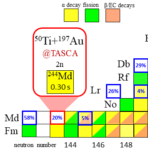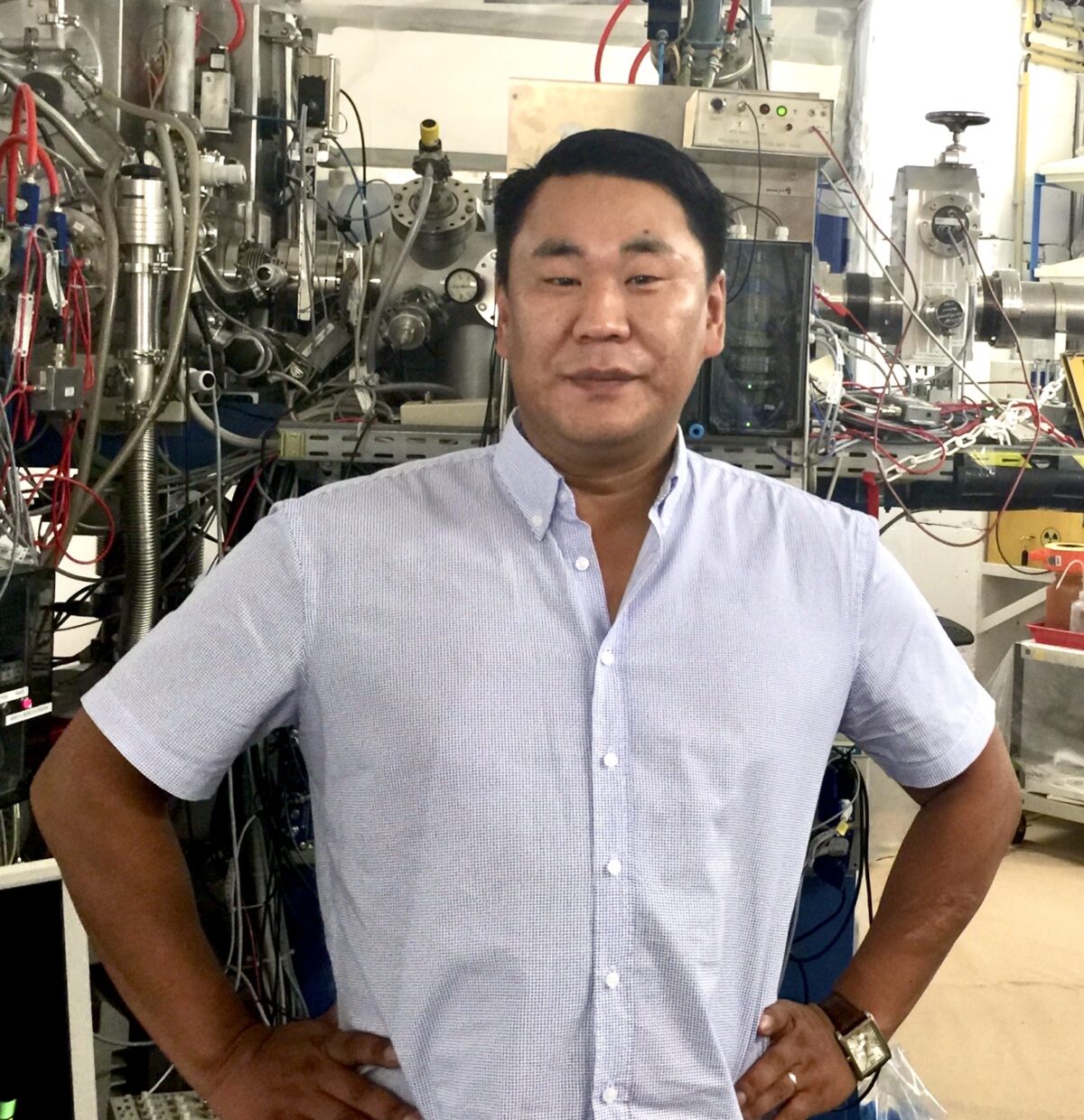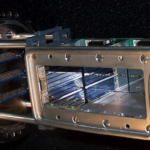Gaining a better understanding of the limiting factors for the existence of stable, superheavy elements is a decade-old quest of chemistry and physics. Superheavy elements, as are called the chemical elements with atomic numbers greater than 103, do not occur in nature and are produced artificially with particle accelerators. They vanish within seconds. A team of scientists from GSI Helmholtzzentrum für Schwerionenforschung in Darmstadt, Johannes Gutenberg University Mainz (JGU), the Helmholtz Institute in Mainz (HIM), and the University of Jyväskylä, Finland, led by Dr. Jadambaa Khuyagbaatar from GSI and HIM, has provided new insights into the fission processes in those exotic nuclei and for this, has produced the hitherto unknown nucleus mendelevium-244. The experiments were part of "FAIR Phase 0", the first stage of the FAIR experimental program. The results have now been published in the journal "Physical Review Letters".



Heavy and superheavy nuclei are increasingly unstable against the fission process, in which the nucleus splits into two lighter fragments. This is due to the ever-stronger Coulomb repulsion between the large number of positively charged protons in such nuclei, and is one of the main limitations for the existence of stable superheavy nuclei.
The nuclear fission process was discovered more than 80 years ago and is being studied intensely to this day. Most experimental data on the spontaneous fission are for nuclei with even numbers of protons and neutrons – called “even-even nuclei”. Even-even nuclei consist entirely of proton and neutron pairs and their fission properties are rather well describable by theoretical models. In nuclei with an odd number of either neutrons or protons, a hindrance of the fission process when compared to the properties of even-even nuclei has been observed and traced back to the influence of such a single, unpaired constituent in the nucleus.
However, the fission hindrance in “odd-odd nuclei”, containing both, an odd number of protons and an odd number of neutrons, is less well known. Available experimental data indicate that the spontaneous fission process in such nuclei is greatly hindered, even more so than in nuclei with only one odd-numbered type of constituents.
Once the fission probability is most reduced, other radioactive decay modes like alpha decay or beta decay become probable. In beta decay, one proton transforms into a neutron (or vice versa) and, accordingly, odd-odd nuclei turn into even-even nuclei, which typically have a high fission probability. Accordingly, if a fission activity is observed in experiments on the production of an odd-odd nucleus, it is often difficult to identify whether fission occurred in the odd-odd nucleus, or not rather started from the even-even beta-decay daughter, which can then undergo beta-delayed fission. Recently, Dr. Jadambaa Khuyagbaatar from GSI and HIM predicted that this beta-delayed fission process may be very relevant for the heaviest nuclei and – in fact – may be one of the main decay modes of beta-decaying superheavy nuclei.
⇒ More Info (in english) as pdf-file
⇒ More Info (in german) as pdf-file
Publication
J. Khuyagbaatar1,2,*, H. M. Albers2, M. Block1,2,3, H. Brand2, R. A. Cantemir2, A. Di Nitto3, Ch. E. Düllmann1,2,3, M. Götz1,2,3, S. Götz1,2,3, F. P. Heßberger1,2, E. Jäger2, B. Kindler2, J. V. Kratz3, J. Krier2, N. Kurz2, B. Lommel2, L. Lens2,3, A. Mistry2, B. Schausten2, J. Uusitalo4, A. Yakushev2
Search for Electron-Capture Delayed Fission in the New Isotope 244Md
Physical Review Letters 125, 142504 (2020)
DOI: 10.1103/PhysRevLett.125.142504
*Corresponding author
Involved Institutes
- Helmholtz Institute Mainz (HIM), Mainz, Germany
- GSI Helmholzzentrum für Schwerionenforschung GmbH, Darmstadt, Germany
- Johannes Gutenberg University Mainz, Mainz, Germany (Press release)
- University of Jyväskylä, Jyväskylä, Finland
